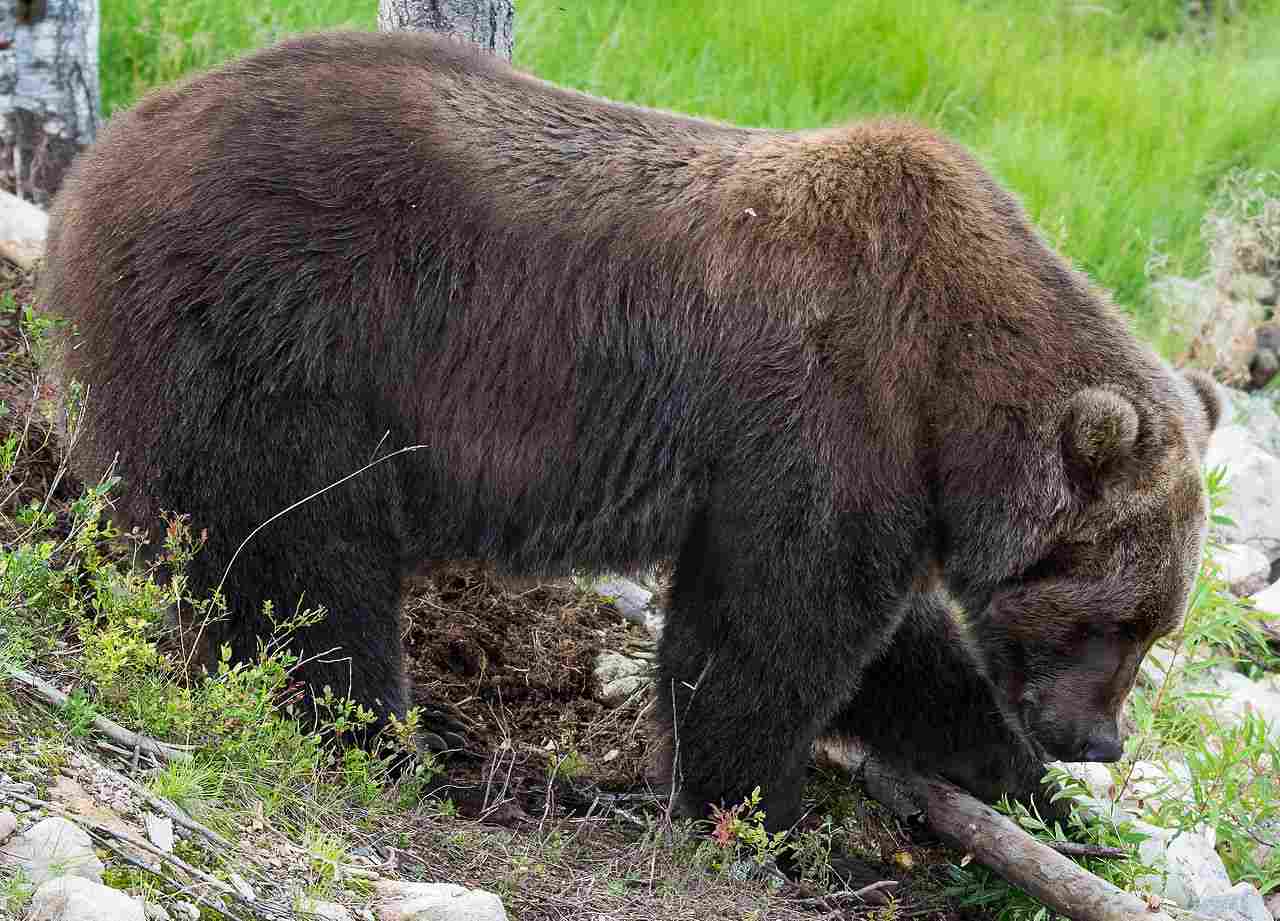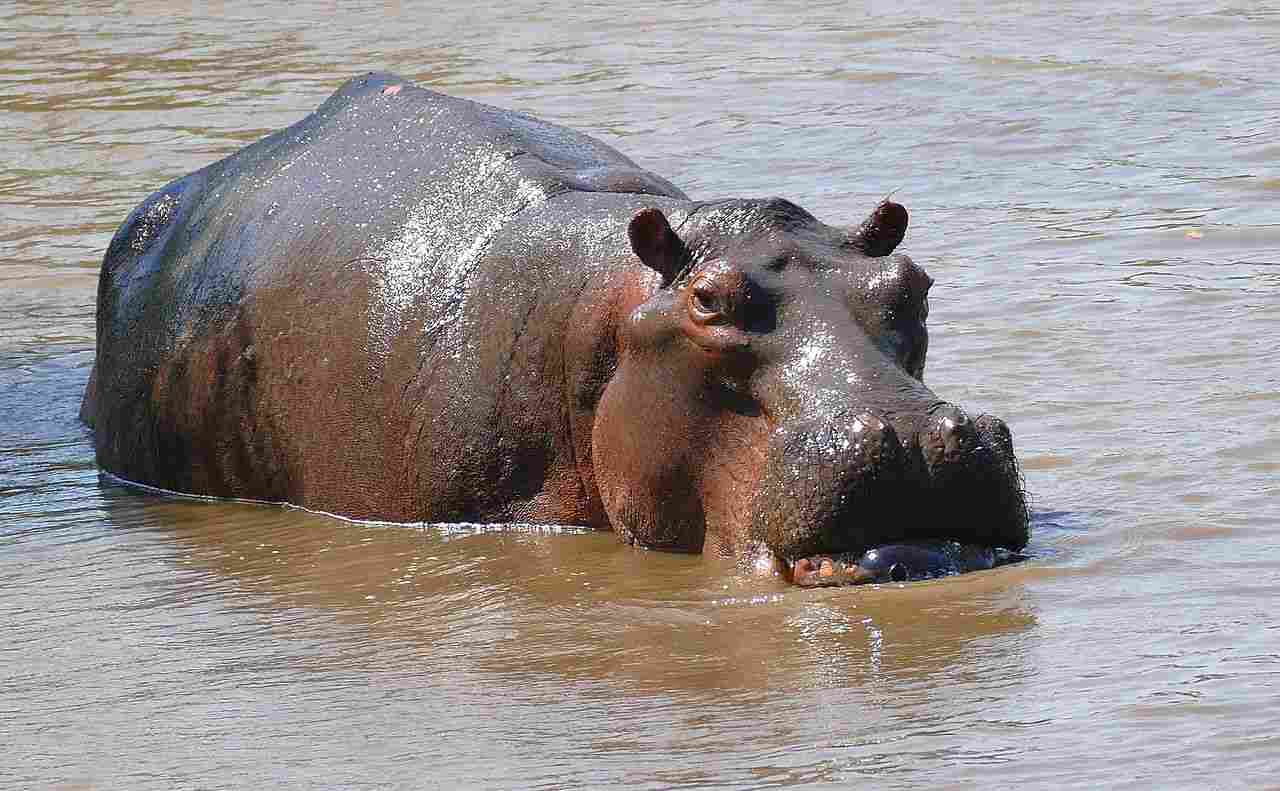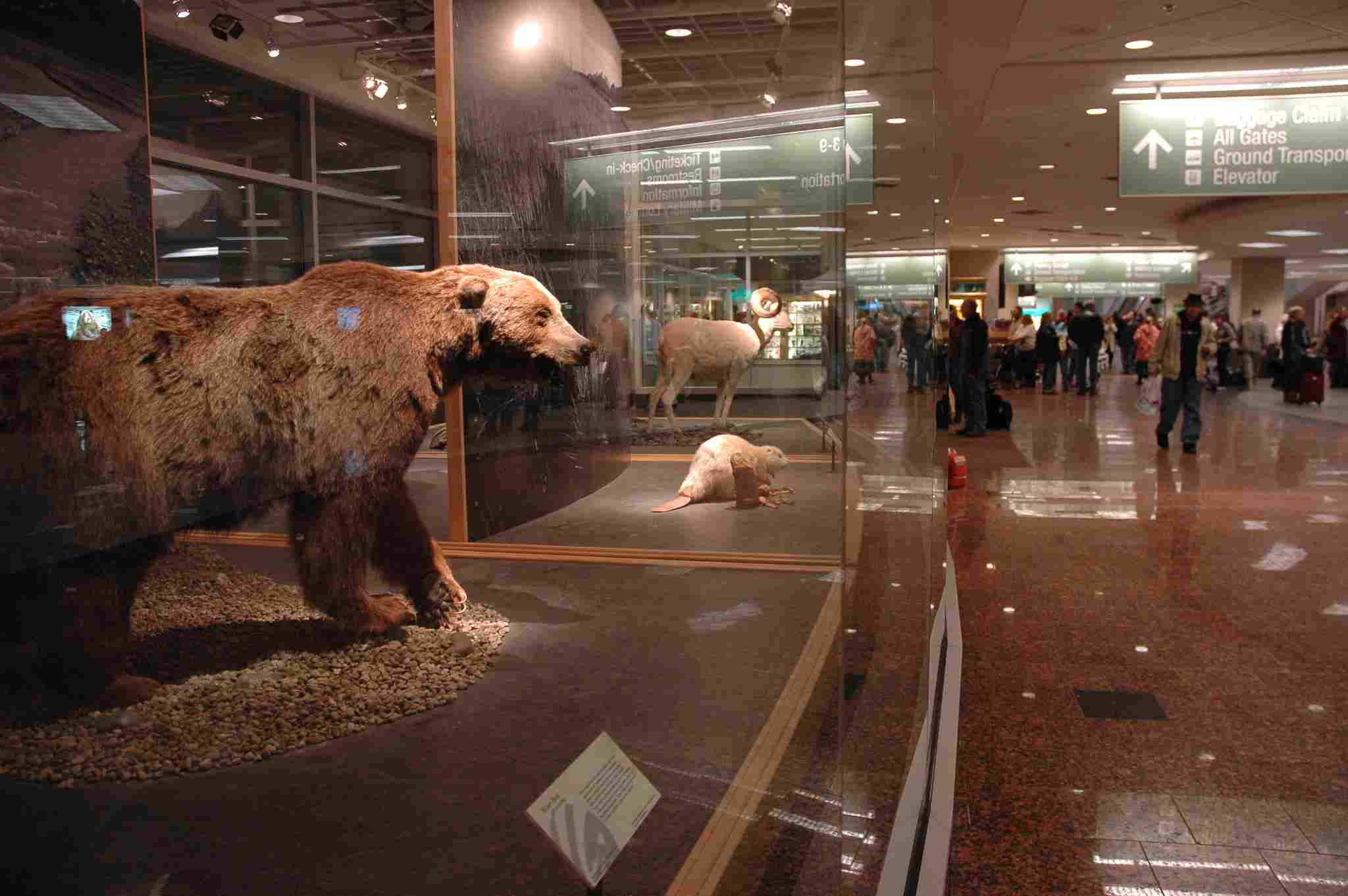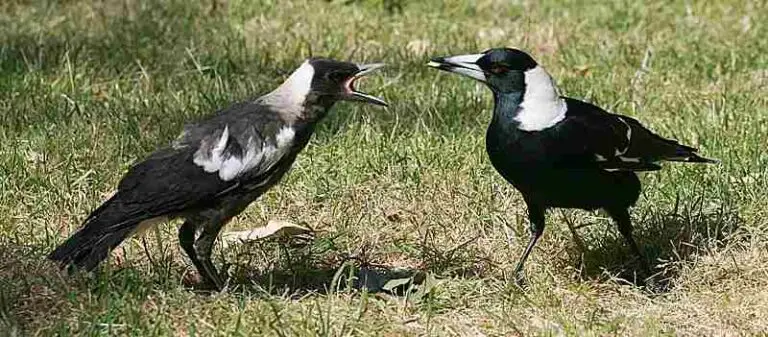Kodiak Bear Vs Lion Vs Hippo Vs Human Explained
A Kodiak bear’s superior size, weight, and strength give it the advantage to win and kill a lion in a fight. With its aggressive offense strategy, the bear can overpower the lion. However, when it comes to a fight with a hippo, the Kodiak bear will not be able to defeat it. The hippo’s larger size, heavier weight, wider mouth, and massive bite force make it a formidable opponent.
On the other hand, the Kodiak bear can easily overpower and kill a human due to its larger size, heavier weight, stronger physique, predatory instincts, and aggressive nature.
Reasons Why a Kodiak Bear Will Win a Lion in a Fight/Physical Confrontation
I). Superior Size and Weight
One of the main reasons why a Kodiak bear would win in a fight against a lion is its superior size and weight. Kodiak bears are the largest subspecies of brown bears and can weigh up to 1,500 pounds, while lions typically weigh around 420 pounds.
The sheer size and weight advantage of the Kodiak bear give it a significant edge in a physical confrontation. With its massive size, the bear can deliver powerful blows and strikes that can easily overpower a lion.

II). Aggressive Offense Strategy
In addition to its size and weight, the Kodiak bear possesses an aggressive offense strategy that can help it defeat a lion. Bears are known for their predatory instincts and their ability to attack with great force.
When confronted with a threat, a Kodiak bear will not hesitate to charge and use its powerful claws and jaws to subdue its opponent. This aggressive offense strategy, combined with its superior size and strength, makes the Kodiak bear a formidable adversary for a lion.
Reasons Why a Kodiak Bear Will Not Win a Hippo in a Fight/Physical Confrontation
I). Hippos are Larger and Heavier Than Kodiak Bears
While the Kodiak bear may have a size advantage over a lion, it is no match for a hippo in terms of size and weight. Hippos are known to be one of the largest land mammals, weighing up to 3,000 pounds, which is almost double the weight of a Kodiak bear.
The sheer size and weight of a hippo give it a significant advantage in a physical confrontation with a bear.
II). Wider Mouth and Stronger Bite Force
Another reason why a Kodiak bear would not win against a hippo is the hippo’s wider mouth and stronger bite force. Hippos have large jaws that can open up to 150 degrees, allowing them to deliver powerful bites. In fact, the bite force of a hippo is one of the strongest among land animals, capable of crushing bones and causing severe injuries. In contrast, while the Kodiak bear has strong jaws, it cannot match the bite force of a hippo.
Therefore, the combination of the hippo’s larger size, weight, wider mouth, and stronger bite force make it a formidable opponent for a Kodiak bear in a fight or physical confrontation. The bear’s size advantage over a lion does not translate to a victory against a hippo.
Reasons Why a Kodiak Bear Will Win a Human in a Fight/Physical Confrontation
I). Kodiak Bears are Larger and Heavier Than Humans
One of the main reasons why a Kodiak bear would win in a fight against a human is their size and weight advantage. Kodiak bears are one of the largest bear species, with adult males weighing up to 1,500 pounds and standing over 10 feet tall when on their hind legs.
In comparison, the average human weighs around 150-200 pounds and stands at an average height of 5 to 6 feet. The sheer size and weight of a Kodiak bear give it a significant physical advantage over a human in a confrontation.
II). Predatory and Aggressive Nature
Another reason why a Kodiak bear would likely win in a fight against a human is their predatory and aggressive nature. Kodiak bears are apex predators and have evolved to be highly efficient hunters. They possess sharp claws and powerful jaws that can inflict severe damage.
In contrast, humans lack the natural weapons and physical attributes to defend themselves effectively against a bear attack. Additionally, bears have a higher pain tolerance and are known to be highly aggressive when provoked or threatened.
*Kodiak Bear Vs Lion Size, Weight, Taxonomy
a). Taxonomic Classification
When comparing the Kodiak bear and the lion, it is important to understand their taxonomic classification and whether they are related. The Kodiak bear, scientifically known as Ursus arctos middendorffi, belongs to the genus Ursus and the species arctos.
On the other hand, the lion, scientifically known as Panthera leo, belongs to the genus Panthera and the species leo. While both animals belong to the same kingdom, Animalia, and the same phylum, Chordata, they belong to different classes, orders, and families.
The Kodiak bear belongs to the class Mammalia, the order Carnivora, and the family Ursidae. This places them in the same family as other bear species such as the grizzly bear and the polar bear. On the other hand, the lion belongs to the class Mammalia, the order Carnivora, and the family Felidae. This places them in the same family as other big cats such as tigers, leopards, and cheetahs.
While both the Kodiak bear and the lion are carnivorous mammals, they are not closely related in terms of taxonomic classification. The Kodiak bear is more closely related to other bear species, while the lion is more closely related to other big cat species.
b). Appearance
When comparing the appearance of the Kodiak bear and the lion, there are several factors to consider. These include their coat, fur, skin, camouflage, and stature.
The Kodiak bear has a thick and dense coat of fur that helps to insulate them in their cold and harsh environment. Their fur can range in color from blonde to brown, with some individuals having a reddish tint. This coloration helps them blend in with their surroundings, particularly in the dense forests and grasslands where they are found. In terms of stature, Kodiak bears are known for their large size and robust build. Adult males can weigh up to 1,500 pounds and stand over 10 feet tall when on their hind legs.
On the other hand, the lion has a short and tawny-colored coat of fur. The coloration of their fur helps them blend in with the savannah grasslands where they are predominantly found. Lions also have a distinctive mane, which is more prominent in males. The mane serves as a visual display of dominance and can vary in color from blond to black. In terms of stature, lions are smaller than Kodiak bears. Adult male lions typically weigh between 330 and 550 pounds and stand around 4 feet tall at the shoulder.
c). Size and Weight Comparison
When comparing the size and weight of the Kodiak bear and the lion, it is clear that the Kodiak bear is significantly larger and heavier. As mentioned earlier, adult male Kodiak bears can weigh up to 1,500 pounds, while adult male lions typically weigh between 330 and 550 pounds. This significant difference in weight gives the Kodiak bear a clear advantage in terms of physical strength and power.
In terms of length, adult male Kodiak bears can measure up to 10 feet from nose to tail, while adult male lions typically measure around 8 to 9 feet in length. The Kodiak bear’s larger size and weight make it a formidable opponent in a physical confrontation.
d). Who Will Win in a Fight Between Them
When considering who would win in a fight between a Kodiak bear and a lion, it is important to take into account their overall strength and physical capabilities. While the lion is a powerful predator in its own right, the sheer size and strength of the Kodiak bear give it a clear advantage.
The Kodiak bear’s larger size and weight allow it to deliver more powerful blows and exert greater force. Their sharp claws and powerful jaws can inflict severe damage on their opponents. Lions, on the other hand, rely more on their speed and agility to catch their prey. While they have strong jaws and sharp teeth, they may struggle to match the physical strength of a Kodiak bear.
In a fight between a Kodiak bear and a lion, it is likely that the Kodiak bear would emerge as the victor due to its superior size and strength.
e). Key Differences and Similarities
When comparing the Kodiak bear and the lion, there are several key differences and similarities to consider. One key difference is their intelligence. While both animals are intelligent in their own right, lions are known for their social intelligence and complex social structures. They live in prides and exhibit cooperative hunting behaviors. Kodiak bears, on the other hand, are more solitary animals and do not exhibit the same level of social intelligence.
In terms of habitats, lions are primarily found in the grasslands and savannahs of Africa, while Kodiak bears are found in the coastal regions of Alaska. These different habitats have shaped their physical characteristics and behaviors.
Both the Kodiak bear and the lion can be dangerous to humans if provoked or threatened. However, human encounters with Kodiak bears are relatively rare due to their remote habitat. Lions, on the other hand, have a higher likelihood of coming into contact with humans in certain parts of Africa.
Therefore, when comparing the Kodiak bear and the lion in terms of size, weight, and taxonomy, it is clear that the Kodiak bear is larger and heavier. This gives it a significant advantage in a physical confrontation. While both animals are powerful predators in their own right, the Kodiak bear’s superior size and strength make it the likely winner in a fight against a lion.
*Kodiak Bear Vs Hippo Size, Weight, Taxonomy
a). Taxonomic Classification
When comparing the Kodiak bear and the hippo, it is important to understand their taxonomic classification and whether they are related. The Kodiak bear, scientifically known as Ursus arctos middendorffi, belongs to the genus Ursus and the species arctos.
On the other hand, the hippo, scientifically known as Hippopotamus amphibius, belongs to the genus Hippopotamus and the species amphibius. While both animals belong to the same kingdom, Animalia, and the same phylum, Chordata, they belong to different classes, orders, and families.
The Kodiak bear belongs to the class Mammalia, the order Carnivora, and the family Ursidae. This places them in the same family as other bear species such as the grizzly bear and the polar bear. On the other hand, the hippo belongs to the class Mammalia, the order Artiodactyla, and the family Hippopotamidae. This places them in the same family as other hoofed mammals such as deer, giraffes, and pigs.
While both the Kodiak bear and the hippo are mammals, they are not closely related in terms of taxonomic classification. The Kodiak bear is more closely related to other bear species, while the hippo is more closely related to other hoofed mammals.

b). Appearance
When comparing the appearance of the Kodiak bear and the hippo, there are several factors to consider. These include their coat, fur, skin, camouflage, and stature.
The Kodiak bear has a thick and dense coat of fur that helps to insulate them in their cold and harsh environment. Their fur can range in color from blonde to brown, with some individuals having a reddish tint. This coloration helps them blend in with their surroundings, particularly in the dense forests and grasslands where they are found. In terms of stature, Kodiak bears are known for their large size and robust build. Adult males can weigh up to 1,500 pounds and stand over 10 feet tall when on their hind legs.
On the other hand, the hippo has a relatively hairless body with a thick, grayish skin. Their skin secretes a natural sunscreen substance, which gives it a wet and shiny appearance. Hippos have a barrel-shaped body with short legs and a large head. They are known for their massive size, with adult males weighing between 3,500 and 9,900 pounds and standing around 5 feet tall at the shoulder.
c). Size and Weight Comparison
When comparing the size and weight of the Kodiak bear and the hippo, it is clear that the hippo is significantly larger and heavier. Adult male Kodiak bears can weigh up to 1,500 pounds, while adult male hippos can weigh up to 9,900 pounds. This significant difference in weight gives the hippo a clear advantage in terms of physical strength and power.
In terms of length, adult male Kodiak bears can measure up to 10 feet from nose to tail, while adult male hippos typically measure around 13 to 16 feet in length. The hippo’s larger size and weight make it a formidable opponent in a physical confrontation.
d). Who Will Win in a Fight Between Them
When considering who would win in a fight between a Kodiak bear and a hippo, it is important to take into account their overall strength and physical capabilities. While the Kodiak bear is a powerful predator, the sheer size and strength of the hippo give it a clear advantage.
Hippos have incredibly strong jaws and can deliver powerful bites. They also have large, sharp incisors and canines that can cause serious damage. In addition, hippos have thick skin that acts as a natural armor, protecting them from attacks.
On the other hand, Kodiak bears have sharp claws and powerful jaws that can inflict severe damage. However, their claws may not be as effective against the thick skin of a hippo. In a fight between a Kodiak bear and a hippo, it is likely that the hippo would emerge as the victor due to its superior size, strength, and natural defenses.
e). Key Differences and Similarities
When comparing the Kodiak bear and the hippo, there are several key differences and similarities to consider. One key difference is their habitats. Kodiak bears are found in the coastal regions of Alaska, while hippos are primarily found in sub-Saharan Africa. These different habitats have shaped their physical characteristics and behaviors.
In terms of intelligence, both animals are intelligent in their own right. Hippos are known for their territorial behavior and their ability to defend their territory. They are also known for their aggression, particularly when they feel threatened. Kodiak bears, on the other hand, are known for their resourcefulness and adaptability in their harsh environment.
Both the Kodiak bear and the hippo can be dangerous to humans if provoked or threatened. However, human encounters with hippos are more common and can be particularly dangerous due to their aggressive nature and territorial behavior. Kodiak bears, on the other hand, are less likely to come into contact with humans due to their remote habitat.
Therefore, when comparing the Kodiak bear and the hippo in terms of size, weight, and taxonomy, it is clear that the hippo is larger and heavier. This gives it a significant advantage in a physical confrontation.
*Kodiak Bear Vs Human Size, Weight, Taxonomy
a). Taxonomic Classification
When comparing the Kodiak bear and humans, it is important to understand their taxonomic classification and whether they are related. The Kodiak bear, scientifically known as Ursus arctos middendorffi, belongs to the genus Ursus and the species arctos. Humans, on the other hand, belong to the genus Homo and the species sapiens. While both animals belong to the same kingdom, Animalia, and the same phylum, Chordata, they belong to different classes, orders, and families.
The Kodiak bear belongs to the class Mammalia, the order Carnivora, and the family Ursidae. This places them in the same family as other bear species such as the grizzly bear and the polar bear. Humans, on the other hand, belong to the class Mammalia, the order Primates, and the family Hominidae. This places them in the same family as other primates such as chimpanzees, gorillas, and orangutans.
While both the Kodiak bear and humans are mammals, they are not closely related in terms of taxonomic classification. The Kodiak bear is more closely related to other bear species, while humans are more closely related to other primates.
b). Appearance
When comparing the appearance of the Kodiak bear and humans, there are several factors to consider. These include their hair, skin, facial features, and stature.
The Kodiak bear has a thick coat of fur that helps to insulate them in their cold environment. Their fur can range in color from blonde to brown, with some individuals having a reddish tint. In terms of stature, Kodiak bears are known for their large size and robust build. Adult males can weigh up to 1,500 pounds and stand over 10 feet tall when on their hind legs.
On the other hand, humans have a variety of hair colors and textures, ranging from blonde to black and straight to curly. Humans have relatively hairless bodies compared to bears, with hair primarily found on the head, face, and other parts of the body. In terms of stature, humans have a wide range of heights and builds, with adult males typically ranging from 5 to 6 feet tall.
c). Size and Weight Comparison
When comparing the size and weight of the Kodiak bear and humans, it is clear that the Kodiak bear is significantly larger and heavier. Adult male Kodiak bears can weigh up to 1,500 pounds, while adult males humans typically weigh between 150 and 200 pounds. This significant difference in weight gives the Kodiak bear a clear advantage in terms of physical strength and power.
In terms of length, adult male Kodiak bears can measure up to 10 feet from nose to tail, while adult males humans typically measure around 5 to 6 feet in height. The Kodiak bear’s larger size and weight make it a formidable opponent in a physical confrontation.

d). Who Will Win in a Fight Between Them
When considering who would win in a fight between a Kodiak bear and a human, it is important to take into account their overall strength and physical capabilities. While humans are intelligent and resourceful, the sheer size and strength of the Kodiak bear give it a clear advantage.
Kodiak bears have sharp claws and powerful jaws that can inflict severe damage. They are also incredibly strong and can deliver powerful blows with their paws. In addition, their thick fur and tough skin provide them with natural protection against attacks.
On the other hand, humans have intelligence and the ability to use tools and weapons. However, their physical strength and natural defenses are no match for the Kodiak bear. In a fight between a Kodiak bear and a human, it is likely that the bear would emerge as the victor due to its superior size, strength, and natural weapons.
e). Key Differences and Similarities
When comparing the Kodiak bear and humans, there are several key differences and similarities to consider. One key difference is their habitats. Kodiak bears are found in the coastal regions of Alaska, while humans are found all over the world in various environments. These different habitats have shaped their physical characteristics and behaviors.
In terms of intelligence, both animals are intelligent in their own right. Humans are known for their advanced cognitive abilities and problem-solving skills. Kodiak bears, on the other hand, are known for their resourcefulness and adaptability in their harsh environment.
Both the Kodiak bear and humans can be dangerous to each other if provoked or threatened. However, human encounters with Kodiak bears are relatively rare due to their remote habitat. Humans, on the other hand, have encroached on bear habitats, leading to more frequent encounters and potential conflicts.
Therefore, when comparing the Kodiak bear and humans in terms of size, weight, and taxonomy, it is clear that the Kodiak bear is larger and heavier. This gives it a significant advantage in a physical confrontation. While humans have intelligence and the ability to use tools, they are no match for the sheer size and strength of the Kodiak bear.
Conclusion
In conclusion, this article has explored the size, weight, and taxonomy of the Kodiak bear in comparison to a lion, hippo, and human. We have discussed the physical advantages of the Kodiak bear over a lion and a human, but also acknowledged its limitations in a confrontation with a hippo.
The taxonomic classification and appearance of the Kodiak bear and humans have been examined, highlighting their differences in habitat, intelligence, and physical characteristics. Ultimately, the Kodiak bear’s size and strength give it a clear advantage in a fight, making it a formidable opponent in the animal kingdom.





